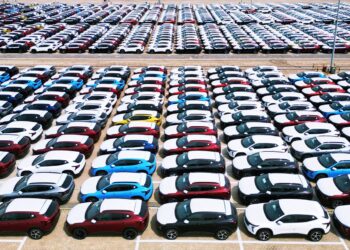No products in the basket.
The enormous logistical challenge of vaccine distribution will be aided by trade and supply chain finance guarantees.
COVID-19 vaccines are being developed and approved for use around the world. It is an effort of historic proportions, but viable vaccines are only the first step toward taming the virus.
Enormous quantities of the vaccines will need to be produced and delivered
The vaccines approved already in some jurisdictions, and many of the candidates likely to be approved going forward, are injectable products that need to be kept cold.
One of the first vaccines that has already received approval in Canada and the United Kingdom must be kept at minus 70 degrees Celsius (-94 Fahrenheit), for example.
The vaccines will need to get to people in places that lack a proper transport infrastructure and where basic refrigeration may be hard to find.
As Patrick Osewe, Chief of Health Sector Group at ADB, has pointed out, a “cold chain” to keep the vaccine at appropriate temperature from production to inoculation will have to be established.
Stockpiles of vaccine-related goods need to be built–things like syringes, glass vials, refrigerated containers to move and store the vaccine, and the list goes on.
The difficulty in getting these items where they need to go, so people can be quickly vaccinated, is compounded by the ongoing global economic uncertainty.
In a world fraught with risk and widespread ratings downgrades, trade and supply chain finance guarantees could play a role in mitigating the risks that may impede the sale of vaccines to some developing countries.
The sheer scale of the logistical challenge is daunting
The global logistics company DHL estimates that global vaccine coverage will take around 200,000 pallet shipments and 15 million deliveries in cooling boxes as well as 15,000 flights.
The vaccine will most likely need to travel by air, since most container ships are not equipped to carry and keep cool such delicate cargo.
The logistics surrounding the supply lines for pandemic-fighting gear such as masks and ventilators got a thorough workout at the beginning of the pandemic and the experience was less than ideal. Those were products which were already in production with established supply lines that did not need refrigeration.
That experience earlier this year serves up lessons that can be used for the next challenge. The logistics surrounding vaccine supply lines will no doubt be even harder.
This time, the situation is different in one important way
We know the size of the challenge that awaits. That’s why planning is already well advanced to sort out what will be needed when the vaccines are ready for delivery.
To take one example, UNICEF, the United Nation’s Children’s Fund, plans to have a billion syringes stockpiled in the countries where they will be most needed in 2021. It says it will have half of that already in its warehouses around the world by the end of this year.
If we want mass vaccination, we need supply chains that are up to the task of delivering the vaccines to people who need it most.
Much more work is needed.
We need to be able to shed light on the problems in global supply chains in the early stages of distribution and address the problems quickly. During the onset of the pandemic, it became clear then that a major source of the difficulties was that supply chains for critical goods were opaque. Everyone could see goods were not getting where they were needed but where exactly blockages were happening was mostly a mystery.
In response, ADB’s Trade and Supply Chain Finance Program developed a supply chain mapping tool as a way for anyone to find out who makes what in the supply chains for 19 products involved in fighting the pandemic. Soon, the supply lines for vaccines will be included in the tool as well.
In addition to mapping the supply chain for vaccine related equipment like syringes, and vials, we’re now trying to devise a way to map out the distribution chain for vaccines to identify any impediments, including for cold transportation and storage, to getting the job done.
To make the trade in these critical products run smoother in developing economies our Trade and Supply Chain Finance Program has made available a $500-million Vaccine Import Facility to purchase vaccines and related equipment. The facility provides guarantees to support the purchase of these items, and AAA-guarantees available through the program’s vaccine import facility will mitigate payment risks and facilitate import.
The beauty of supply chain support is that it can compound so easily, making it ideally suited to the current challenge of removing bottlenecks in the supply of life-saving vaccine. Through risk-sharing with partner banks, the $500 million facility could be leveraged to $1 billion.
The production and distribution of vaccines won’t be easy, but it needs to be done. If we want a new normal that is closer to our old normal, mass vaccination is the only choice. And if we want mass vaccination, we need supply chains that are up to the task of delivering the vaccines to people who need it most.
Discover more from Thailand Business News
Subscribe to get the latest posts sent to your email.














